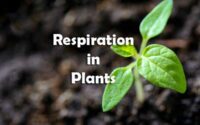Animal Kingdom Questions and Answers
1. Retrogressive metamorphosis occur in
A. Hemichordata
B. Cephalochordata
C. Urochordata
D. Avertebrata
2. Assertion: In Pleurobrachia, eight comb like Ciliary plates called comb plates are present on the body that help in locomotion.
Reason: Pleurobrachia reproduces sexually and its life cycle includes cydippid larva.
A. If both assertion and reason are true and reason is the correct explanation of assertion.
B. If both assertion and reason are true but reason is not the correct explanation of assertion.
C. lf assertion is true but reason is false
D. If both assertion and reason are false.
3. Which one of the following is not a mammalian character?
A. Presence of milk producing glands
B. Skin is unique in possessing hair
C. Presence of external ears called pinnae
D. Homodont type of dentition
4. The malpighian tubules are the excretory organ of –
A. Flatworm
B. Earthworm
C. Rotifers
D. Locust
5. in these, reproduction involves formation of gemmule
A. Sycon
B. Planaria
C. Monocystics
D. Hydra
6. This is not an example of Radiata
A. Sea anemone
B. Jelly-fish
C. Corals
D. Fish
7. This is an example of a mammal
A. Scoliodon
B. Trygon
C. Whale
D. Shark
8. Which of the following is common round worm
A. Ascaris
B. Tubellaria
C. Fluke
D. Tapeworm
9. Read the following statements and choose the correct option.
(i) Aves are homoiothermous
(ii) Pinnae are present in mammals.
(iii) Operculum is present in chondrichthyes.
(iv) Skin of amphibians are dry and horny.
(v) Open type of circulation is found in cyclostomes
A. (i)) and (ii) only are wrong
B. (i), (iii) and (iv) only are wrong.
C. (i), (ii) and (iv) only are wrong
D. (ii), (iv) and (v) only are wrong.
10. Asexual reproduction through formation of gemmule occurs in
A. Ascidian
B. Planaria
C. Hydra
D. Spongilla
11. The marsupial mammal amongst the following animals is
A. Gibbon
B. Lemur
C. Kangaroo
D. Spiny ant-eater
12. In case of poriferans, the spongocoel is lined with flagellated cells called
A. Ostia
B. Ula
C. Choanocytes
D. Mesenchymal cells
13. An important characteristic that Hemichordates share with Chordates is
A. absence of notochord
B. ventral tubular nerve cord
C. pharynx with gill slits
D. pharynx without gill slits
14. Which among these is the correct combination of aquatic mammais?
A. Seals, Dolphins, Sharks
B. Dolphins, Seals, Trygon
C. Whales, Dolphins, Seals
D. Trygon, Whales, Seals
15. Choose the correct statement:
A. All mammals are viviparous
B. All cyclostomes do not possess jaws and paired fins
C. All reptiles have a three-chambered heart
D. All pieces have gills covered by operculum
16. Which one of the following characteristics is not shared by birds and mammals?
A. Breathing using lungs
B. Viviparity
C. Warm blooded nature
D. Ossified endoskeleton
17. Which of the following features is not present in the phylum-Arthropoda?
A. Metameric segmentation
B. Parapodia
C. Jointed appendages
D. chitinous exoskeleton
18. Which is the National Aquatic Animal of India?
A. River dolphin
B. Sea-horse
C. Blue whale
D. Gangetic shark
19. One of these is not a feature of non-chordates.
A. Absence of post-anal tail
B. Ventrally located central nervous system
C. Absence of notochord
D. Ventrally located heart
20. Select the animal that exhibits retrogressive metamorphosis.
A. Bufo
B. Limulus
C. Amphioxus
D. Herdmania
21. Which one of the following animals has two separate circulatory pathways?
A. Frog
B. Whale
C. Lizard
D. Shark
22. Body having meshwork of cells, internal cavities lined with food filtering flagellated cells an indirect development are the characteristics of phylum
A. Coelenterata
B. Mollusca
C. Porifera
D. Protozoa
23. Which one of the following matching pair is incorrect?
A. Mollusca-Pseudocoel
B. Cnidaria-Nematocyst
C. Annelida-chloragogen cells
D. EchinOdermata-water vascular system
24. Which of the following matching pair is incorrect.
A. shell fish-Pisces
B. Silver fish-Arthropoda
C. Cuttle fish-Mollusca
D. Star fish-Echinodermata
25. Which one of the following statements is wrong?
A. Insects have one pair of antennae
B. Millipedes possess two pairs of appendages in each segment of the body.
C. Prawns have two pairs of antennae.
D. Animals belonging to the Phylum Porifera have nematocysts.
26. Which one of the following group of animals is homeothermic?
A. Reptiles
B. Birds
C. Amphibian
D. Fishes
27. Which one of the following is not a characteristic feature of mammals?
A. Diphyodont tooth
B. Ten pairs of cranial nerves
C. Seven cervical vertebrae
D. Left aortic arch in the circulatory system
28. Which one of the following group of animals is homeothermic?
A. Amphibians
B. Fishes
C. Reptiles
D. Birds
29. What is the range of length of sponges?
A. 1cm-1 metre
B. 1 mm-10mm
C. 1mm-100 mm
D. 1metre-10 metre
30. Poterion is an example of
A. Protozoa
B. Cnidaria
C. Porifera
D. Ctenophora
31. This is not a Cnidarian:
A. Obelia
B. Sea anemone
C. Jelly fish
D. Beroe
32. Which one of the following is an exotic carp species?
A. Barbus stigma
B. Cyprinus carpio
C. Labeo bata
D. Cirrhinus mrigala
33. Which one of the following is not correctly matched
A. Sycon-Canal system
B. Starfish-Radial Symmetry
C. Ascaris-Flame cell
D. Prawn-Haemocoel
34. Which one of the following animal phyla does not possess a coelom?
A. Platyhelminthes
B. Annelida
C. Mollusca
D. Echinodermata
35. Which of the following phyla has members with a true coelomr?
A. Aschelminthes
B. Arthropoda
C. Platyhelminthes
D. Coelenterata
36. Tissue level of organisation is not found in
A. Coelenterata
B. Ctenophora
C. Poritera
D. Both (a) and (c)
37. Metagenesis refers to
A. Occurrence of a drastic change in form during postembryonic development
B. presence of a segmented body and parthenogenetic mode of reproduction
C. presence of different morphic forms
D. alternation of generation between asexual and sexual phases of an organism.
38. Which of the following waste products in grasshopper is not excreted and is used in other metabolic activities?
A. carbon dioxide
B. water
C. uric acid
D. faeces
39. Which one is also called Hookworm?
A. Ancylostoma
B. Rhabditis
C. Enterobius
D. Ascaris
40. Phylum Annelida includes over
A. 15,000 species
B. 9,000 species
C. 60,000 species
D. 9,00,000 species
41. Among these oxygenation of blood occurs through moist skins
A. Earthworm
B. Octopus
C. Doris
D. Squid
42. Flame cells of flatworms help in-
(i) Osmoregulation
(ii) Digestion
(iii) Reproduction
(iv) Excretion
A. (ii) only is correct
B. (i) and (iv) are correct
C. (ii) only is correct
D. (i) and (v) are correct
43. Select the taxon mentioned that represents both marine and freshwater species
A. Echinoderms
B. Ctenopnord
C. Cephalochordata
D. Cnidaria
44. This has mouth on the lower side and anus on the upper side:
A. Limulus
B. Daphnia
C. Buthus
D. Sea urchin
45. This is also known as flying fish:
A. Scoliodon
B. Pristis
C. Exocoetus
D. Trygon
46. This is not a freshwater fish
A. Pomfret
B. Rohu
C. Kalbasu
D. Catla
47. The number of digits in the limb used for walking by reptiles are
A. 4
B. 5
C. 6
D. 2
48. The number of pairs of cranial nerves in birds are
A. 6
B. 4
C. 12
D. 4
49. Who has opposable thumb?
A. Platypus
B. Kangaroo
C. Lemur
D. Mole
50. Common character of all vertebrates without exception is
A. body divided into head, trunk and tail
B. two pairs of limbs
C. exoskeleton
D. presence of skull



